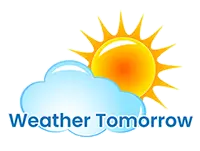When it comes to winter weather, two terms that often get thrown around are “snow” and “sleet.” While both are associated with cold temperatures and precipitation, they are distinctly different meteorological phenomena. In Here are some intricacies of snow and sleet, highlighting their unique characteristics, formation processes, and the impact they have on our daily lives.
Snow: Nature’s Frozen Blanket
Snow Formation
Snow is a beautiful and often serene meteorological event. It forms when moisture in the atmosphere freezes into ice crystals. These ice crystals then combine to form snowflakes. The process begins high up in the atmosphere, where temperatures are well below freezing. As these ice crystals fall toward the Earth’s surface, they may merge with other crystals, creating the unique and intricate snowflakes we’re familiar with.
Appearance and Characteristics
Snowflakes come in a dazzling array of shapes and sizes, each one seemingly a work of art. From simple hexagonal prisms to elaborately branched dendrites, snowflakes are incredibly diverse. When snow accumulates on the ground, it creates a soft, white, and often powdery layer. The depth of this layer can vary widely, from a light dusting to several feet deep.
Effects of Snow
Snow has a significant impact on our environment and daily routines. It provides much-needed moisture to regions suffering from drought, replenishing water sources and nourishing ecosystems. Snow also insulates the ground, protecting plant roots and providing a habitat for small animals during the cold winter months.
From a recreational perspective, snow offers opportunities for skiing, snowboarding, and sledding. It transforms landscapes into winter wonderlands, inviting us to build snowmen and engage in snowball fights.
Sleet: Icy Pellets from the Sky
Sleet Formation
Sleet, on the other hand, is less picturesque and often less welcome. Sleet forms when there’s a layer of freezing air above the ground, but the air closer to the surface is above freezing. Precipitation begins as snow high in the atmosphere but encounters this warm layer on its way down. As a result, the snowflakes partially melt into raindrops. However, before reaching the ground, these raindrops encounter another layer of freezing air, causing them to refreeze into tiny ice pellets.
Appearance and Characteristics
Sleet is characterized by its small, translucent pellets of ice. These pellets often bounce when they hit a surface, producing a distinct sound. Unlike snow, sleet doesn’t accumulate as a soft blanket but rather as a layer of ice pellets on the ground.
Effects of Sleet
Sleet can create hazardous conditions, particularly on roadways. The icy pellets can accumulate and create slippery surfaces, making driving treacherous. Sleet storms often lead to accidents and road closures.
In contrast to snow, sleet doesn’t provide the same benefits to the environment. It doesn’t offer the moisture that snow does, and its icy nature can be detrimental to plants and wildlife.
Conclusion
In summary, while both snow and sleet are products of cold weather conditions, they have distinct characteristics and formation processes. Snow is known for its beauty and ability to transform landscapes into winter wonderlands, while sleet can create hazardous conditions, especially on roads. Understanding the differences between these two types of precipitation is essential for preparedness and safety during the winter months.
So, the next time you see snowflakes gently falling from the sky or hear the distinctive sound of sleet pellets hitting your window, you’ll have a deeper appreciation for the intricacies of winter weather.









